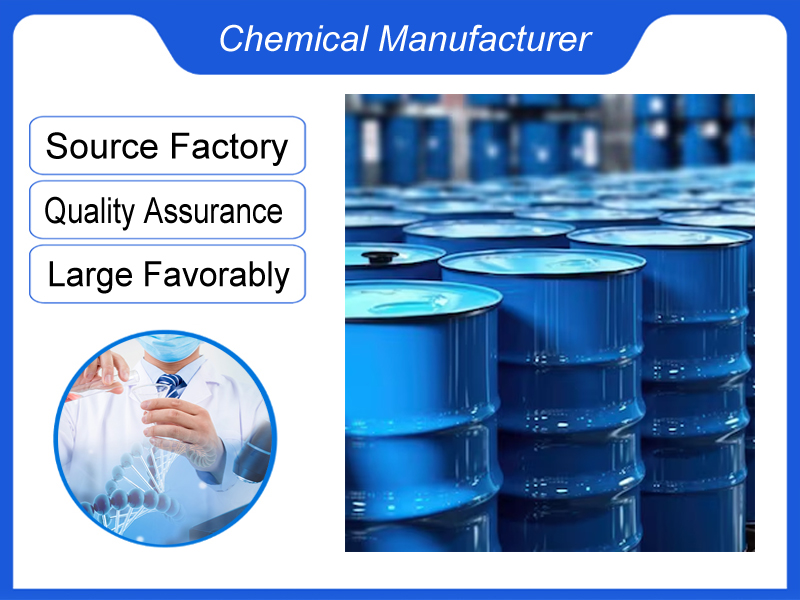
Clindamycin Phosphate CAS 24729-96-2
We are a manufacturer based in China. We specialize in providing high-quality Clindamycin Phosphate CAS 24729-96-2 for industrial clients across various sectors. Whether you need chemicals consultation or technical support, our team is here to help.
Category:Active Pharmaceutical Ingredients Own Brand:MT /MOQ:100KG /From China/ B2B only.
Introduction
Molecular Formula: C18H34ClN2O8PS
Molecular Weight: 504.97
CAS No.: 24729-96-2
It is a chemically semi-synthetic derivative of clindamycin. It has no antibacterial activity in vitro. It can be quickly hydrolyzed to clindamycin after entering the body to exert its pharmacological effects. Its mechanism of action, antibacterial spectrum, indications, and therapeutic effects are the same as clindamycin, but its fat solubility and permeability are better than clindamycin.
Description
It is white or almost white, slightly hygroscopic powder. It is freely soluble in water, very slightly soluble in ethanol (96 per cent), practically insoluble in methylene chloride. It shows polymorphism.
Application
It is a semi-synthetic derivative of clindamycin. Its antimicrobial spectrum, antimicrobial activity and therapeutic effect are the same as clindamycin, but its liposolubility and permeability are better than clindamycin. It is suitable for the following infections caused by Gram-positive bacteria and anaerobic bacteria: respiratory infection, urinary infection, female pelvic and genital infection, skin and soft tissue infection.
Packing and Storage
Preserve in an airtight container, at a temperature not exceeding 30 °C. If the substance is sterile, store in a sterile, airtight, tamper-proof container.
Minimum Order
One package
Clindamycin Phosphate: A Veterinary Antibiotic
Clindamycin Phosphate is an important antibiotic in veterinary medicine, utilized for treating various bacterial infections in animals.
1. General Characteristics
| Aspect | Details |
| Classification | Lincosamide antibiotic, related to lincomycin. The phosphate form is a prodrug, which is more soluble and can be easily converted to the active form (clindamycin) in the body. |
| Source | Semi – synthetically derived from lincomycin. Chemical modification with phosphate groups results in clindamycin phosphate. |
| Formulation | Available as powders, which can be formulated into injectable solutions for parenteral use, allowing for rapid delivery of the drug into the bloodstream. It can also be incorporated into topical formulations such as creams and ointments for treating skin infections. Oral formulations, like capsules or suspensions, are also available for convenient administration to animals. |
| Solubility | Soluble in water, which is beneficial for preparing solutions for different routes of administration. The high solubility of the phosphate form enables easy preparation of injectable solutions and efficient delivery of the drug. |
2. Mechanism of Action
| Action | Explanation |
| Inhibition of Protein Synthesis | Clindamycin Phosphate, after being converted to clindamycin in the body, binds to the 50S ribosomal subunit of bacteria. It specifically targets the peptidyl transferase region, inhibiting the formation of peptide bonds during protein synthesis. As a result, the elongation of the polypeptide chain is blocked, leading to the inhibition of bacterial protein synthesis and subsequent growth arrest. |
| Selective Activity | It has a mainly Gram – positive antibacterial spectrum. It is highly effective against bacteria such as Staphylococcus spp., Streptococcus spp., and Clostridium spp. It also shows activity against some anaerobic bacteria. However, its activity against Gram – negative bacteria is relatively limited, except for certain species like Bacteroides fragilis. |
3. Clinical Applications and Considerations
| Category | Details |
| Applications | – Treating respiratory tract infections in livestock and poultry, especially those caused by Gram – positive bacteria. In poultry, it can be used against Mycoplasma gallisepticum and Staphylococcus aureus infections. In cattle, it helps combat respiratory diseases caused by Streptococcus spp. – Used to manage skin and soft – tissue infections in animals. Topical applications are effective against infections caused by Staphylococcus spp. and Streptococcus spp. – Treating anaerobic infections in animals, such as those caused by Clostridium perfringens in poultry, which can cause necrotic enteritis. – In some cases, used to treat dental infections in companion animals like dogs and cats, as many oral pathogens are sensitive to clindamycin. |
| Considerations | – Overuse can contribute to the development of antibiotic – resistant bacteria. Adhering to proper dosage and treatment duration as prescribed by veterinarians is essential. – High doses or long – term use may cause gastrointestinal upset in animals, including diarrhea, vomiting, and loss of appetite. In some cases, it can also disrupt the normal gut microbiota, potentially leading to the overgrowth of Clostridium difficile and subsequent diarrhea. – Caution is needed when using it in combination with other drugs. There may be potential drug – drug interactions, especially with other antibiotics that target protein synthesis, such as macrolides, as they may compete for binding sites on the ribosome. |
Clindamycin Phosphate plays a crucial role in maintaining the health and productivity of livestock, poultry, and companion animals by effectively treating a variety of bacterial infections.
If you're ready to take the next step, Leave your message below and we’ll reply soon. 20+ years of chemical manufacturing & export experience, a partner you can trust.





